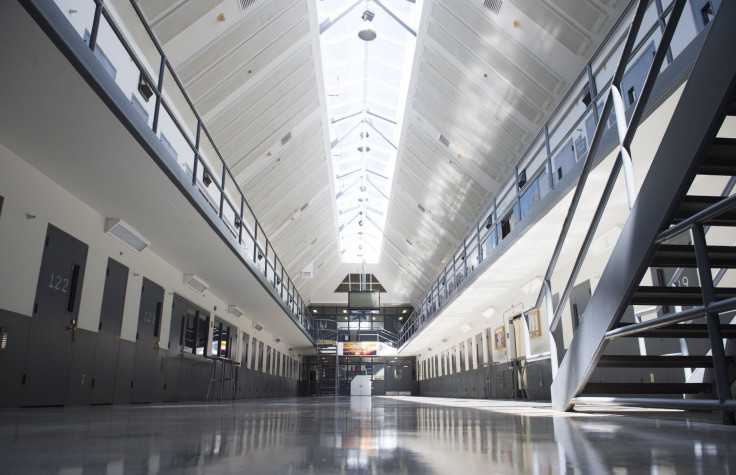Prisoners Who Beat Harvard Debate Team Made Headlines, But Support For Prison Education Still Lagging

After three inmates enrolled at a prison education program beat a team of Harvard University undergraduates in a debate, the unexpected victory became the feel-good story of the week. But while the Harvard speech contest made national headlines, the inmate debate team at Bard College in Annandale-On-Hudson, New York, is a rare example of education investment in prisons at a time when lawmakers across the nation have increasingly eliminated learning programs that studies show reduce recidivism rates.
Three decades ago, there were 350 post-secondary prison programs in 37 states. By 2005, only a dozen prisons had post-secondary programs and many existed largely because of volunteer efforts by individual colleges and universities. Overall, states with large prison populations have cut prison education funding by 10 percent in recent years, while states with medium-sized populations slashed education budgets by an average of 20 percent.
“For many years the focus of criminal justice policy in this country has been very punitive; very much a lock them up and throw away the keys mentality,” said Michele Deitch, a lawyer and lecturer at the Lyndon B. Johnson School of Public Affairs at the University of Texas at Austin who studies U.S. prisons. “The perspective was that prisoners were not deserving.”
In 1994, during a time of hard-line crime policy embraced by both parties, Congress banned prisoners from receiving Pell Grants that would allow them to take college courses. After that federal ban, many states dropped their state funding for prisoner education within a year or two, said Doran Larson, a professor at Hamilton College in Clinton, New York, who studies prison reform.
Harvard's debate team loses to a group of New York inmates http://t.co/aQ4S3sUAah pic.twitter.com/IQXv4zKVis
— CBS News (@CBSNews) October 7, 2015
The Obama administration announced in July it would begin a pilot Pell Grant program allowing prisoners to take college courses. The pilot is a way around the 1994 ban on prisoners getting the grants, and allows the government to test the effectiveness of the program. But national lawmakers have opposed the funding plan, arguing prisoners should not get the funds to go to college when many Americans scrimp to pay for school. One legislator, U.S. Rep. Chris Collins, R-N.Y., tried to block the pilot program from using the funds.
“Since the ban on Pell, incarcerated students have had to largely depend on privately funded in-prison education programs such as the Bard Prison Initiative,” said Mel Gagarin, senior associate of public affairs at Inside Out, a New York City coalition that promotes education for inmates. “While these programs are great, they are few and far between, leading to a disproportional problem of access. More so, for most, long waiting lists prove the demand is far exceeding the supply.”
Feel good story of the decade: Prisoners beat Harvard students in debate http://t.co/wyynkM6t4t
— Batya Ungar-Sargon (@bungarsargon) October 7, 2015
Most prisoners seek English as a second language classes or trade programs, said Steve Steurer, former executive director of the Correction Education Association, a Maryland nonprofit that provides educational resources to prisoners.
Prison reform advocates have long said educating prisoners makes them less likely to return to crime and, eventually, prison. One study that many reform advocates cite was done by the Rand Corporation, a California think tank. The 2013 report found that prisoners who were involved in secondary education programs were 43 percent less likely to reoffend. Researchers also found that for every dollar spent on educating prisoners, $5 can be saved on incarceration costs linked to recidivism.
“You basically get a 500 percent return,” Larson said of the investment in prisoner education. “It also makes for more peaceful institutions; [prisoners] clean up their behavior to be able to take part in the institution.”
The Bard Prison Initiative that pitted inmates against Harvard undergraduates is the biggest program for prison education in the country with nearly 300 prisoners pursuing degrees, the Huffington Post reported. Prisoners enrolled at Bard have gone on to work in the business world, and the program itself was awarded $1 million in July by the New York-based Ford Foundation.
Despite the press the Harvard debate story received, reform advocates are doubtful it will increase public support for prison education. Steurer said a lot of good press has surrounded prison education in the past decade, including the Rand report, but major strides still haven’t been made to allow for more prisoners to gain access to a college education.
“I’m sure that it will be a flash in a pan,” Deitch said of the Harvard story. “To change the way policy makers thing about these issues. … It will take more than one feel-good story.”
© Copyright IBTimes 2024. All rights reserved.





















